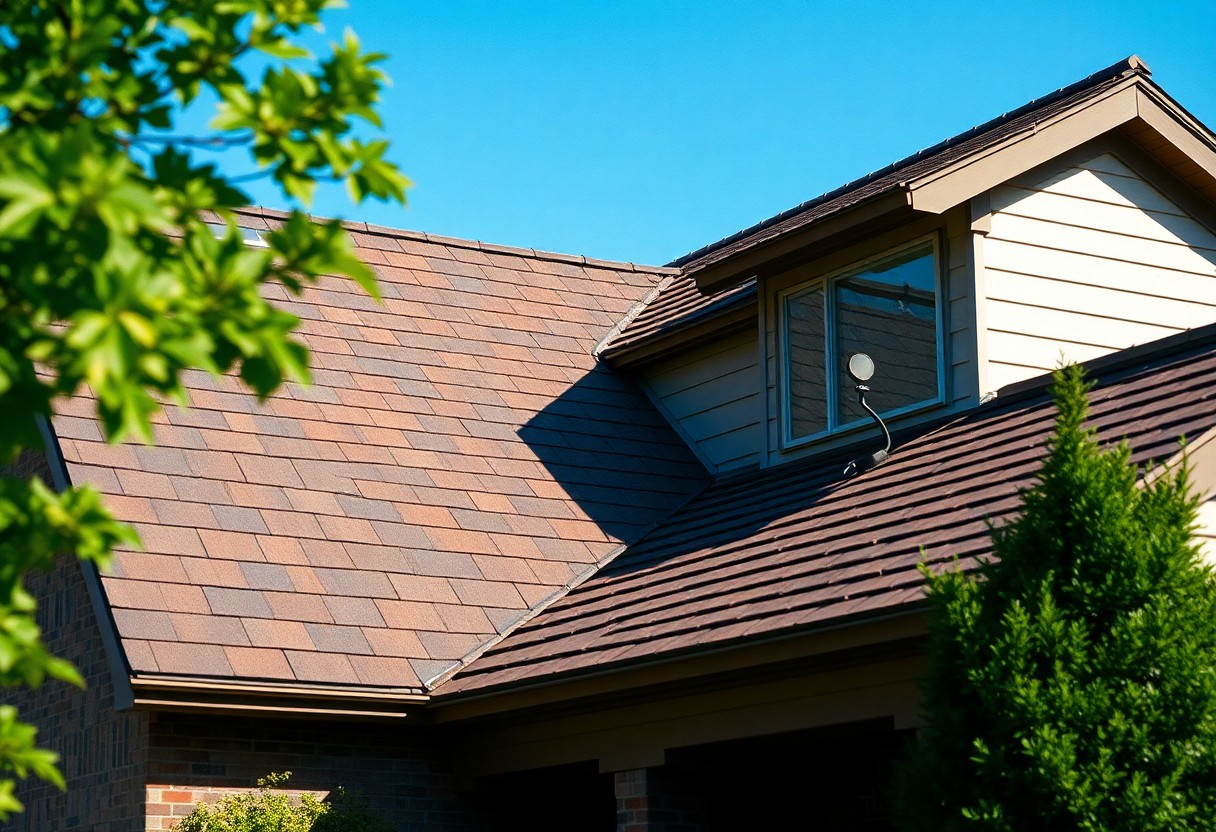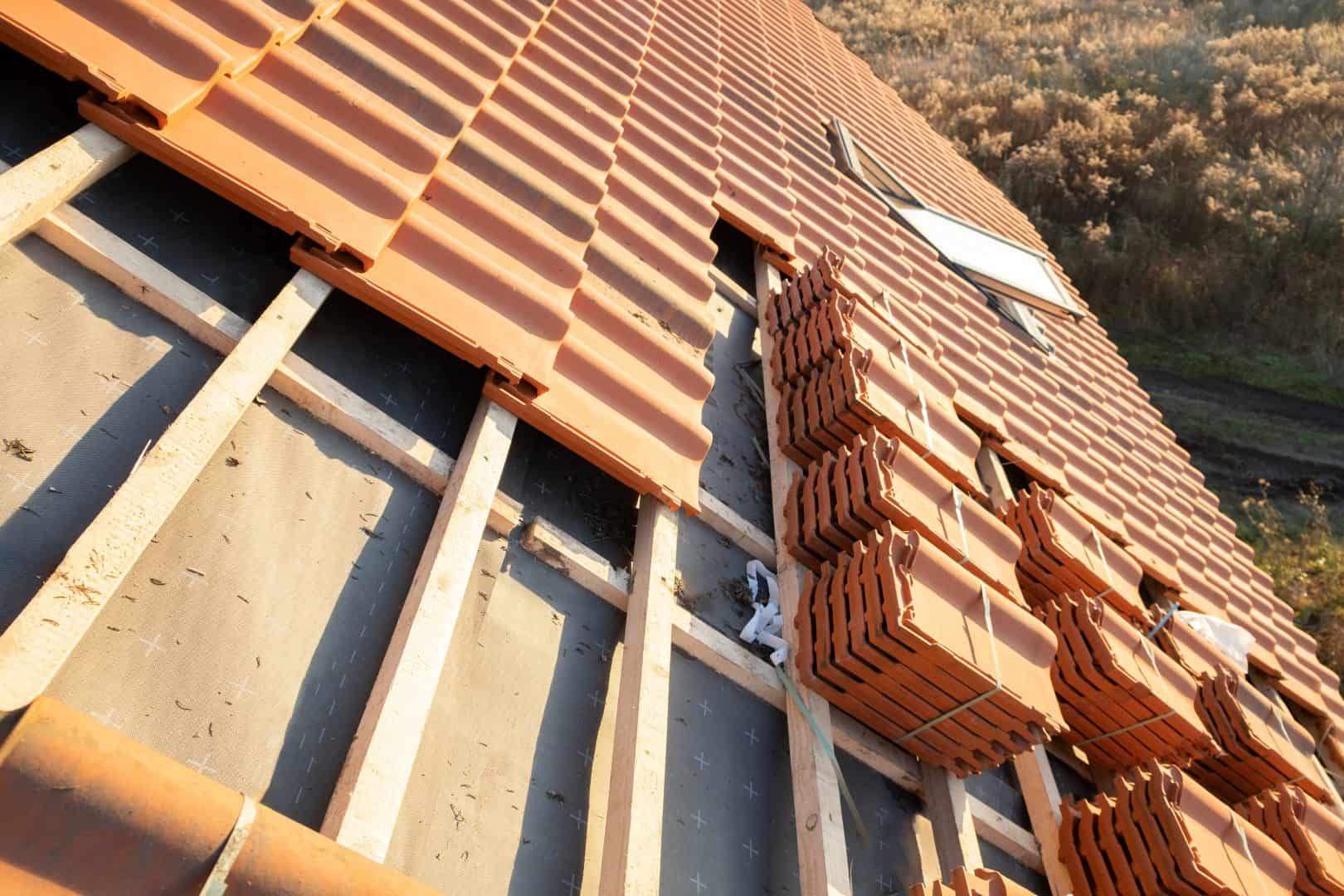What type of roofing material is best for my home?
Fill Out The Form And We'll Get Back To You

Many homeowners find themselves overwhelmed when choosing the right roofing material for their property. With an array of options available, you need to consider factors such as durability, aesthetics, and energy efficiency to make an informed decision. This guide will help you navigate the various materials, from traditional tiles to modern metal roofs, ensuring you select the best fit for your home and climate. By understanding the pros and cons of each type, you can enhance your home’s value and safeguard it against the elements.
Key Takeaways:
- Climate Suitability: Choose a roofing material that can withstand the weather conditions in your area, such as high winds, heavy rain or extreme temperatures.
- Durability and Longevity: Opt for materials known for their strength and lifespan, like slate or metal, to minimise the need for frequent replacements.
- Energy Efficiency: Consider materials that provide insulation and reflectivity to help reduce energy costs and improve the comfort of your home.
Assessing Your Climate
As you consider the best roofing material for your home, assessing your climate is vital. Different materials respond uniquely to variations in temperature, humidity, and precipitation. Understanding how these factors interact with potential roofing options will help you choose a solution that enhances your property’s durability and performance.
Impact of Weather Conditions
Between extreme heat, heavy rain, and strong winds, your local weather conditions can significantly influence the lifespan and effectiveness of your roofing. For instance, clay tiles may crack in freeze-thaw cycles, while asphalt shingles can deteriorate faster in intense sun. Evaluating how your chosen material will withstand local weather patterns is vital for long-term satisfaction.
Energy Efficiency Considerations
Against a backdrop of rising energy costs, energy efficiency should be a priority in your roofing decision. The right material can help regulate the temperature within your home, reducing reliance on heating and cooling systems.
But the energy efficiency of roofing materials is often determined by their insulation properties and reflectivity. Materials like metal and certain types of shingles can reflect sunlight, keeping your space cooler in summer, while options like slate or clay provide excellent insulation in winter, helping you save on energy bills year-round. By selecting an energy-efficient roofing material, you invest not only in comfort but also in long-term savings for your home.
Types of Roofing Materials
Some factors to consider when choosing roofing materials include durability, cost, and aesthetic appeal. The following options are popular among homeowners:
- Asphalt Shingles
- Metal Roofing
- Tile and Slate Roofing
- Wood Shingles and Shakes
- Flat Roofing
The What Is the Best Type of Roof? (2023 Guide) can help you decide which material suits your home best.
Asphalt Shingles
Asphalt shingles are a popular choice among homeowners due to their affordability and ease of installation. They come in various styles and colours, allowing you to customise your home’s exterior effortlessly.
Metal Roofing
Behind the growing popularity of metal roofing is its remarkable durability and energy efficiency. Available in panels or shingles, metal roofs can last up to 50 years or more with proper maintenance.
It is worth noting that metal roofing reflects solar heat, potentially reducing your energy costs. Plus, it’s lightweight and can support various architectural styles, enhancing your home’s appeal.
Tile and Slate Roofing
Below the charming aesthetics, tile and slate roofing offer exceptional longevity. These materials are highly resistant to extreme weather conditions and provide excellent insulation, making them suitable for diverse climates.
Roofing options like clay or concrete tiles, along with natural slate, bring a touch of elegance and can last well over 100 years with proper maintenance. Their weight and cost may require additional structural support, so consider this aspect when planning your roofing project.
Wood Shingles and Shakes
Shingles made from wood can provide a warm, natural look to your home. They are often crafted from cedar, redwood, or pine and can last for several decades when properly maintained.
And while wood roofing materials can be susceptible to fire and rot, treating them with preservatives can enhance their longevity and performance. Their natural beauty often complements a variety of architectural styles, adding to your home’s overall charm.
Cost Analysis
Keep in mind that the cost of roofing materials varies significantly, depending on your choice, local availability, and installation fees. For an in-depth discussion, for a typical residential home roof, is there any consensus … on preferred materials? Understanding your budget and the benefits of each option is imperative for making an informed decision.
Initial Investment
Among the first factors you should consider is the initial investment required for different roofing materials. While asphalt shingles tend to be the most affordable option upfront, alternatives such as metal, slate, or tiles might demand a higher initial cost. However, weighing these costs against the longevity and durability of the materials is key.
Long-term Maintenance Costs
Before finalising your roofing choice, it’s imperative to evaluate the long-term maintenance costs associated with each material. Some materials may have lower upfront costs but require more frequent repairs or replacement over time, leading to increased overall expenses.
To ensure you maintain your roof effectively, it’s important to consider not just the installation cost, but also how much you may need to spend on upkeep. Metal roofs, for instance, may incur lower maintenance costs due to their durability, whereas traditional asphalt may need replacement sooner, resulting in higher long-term expenses. Always factor in these considerations when making your final decision for a cost-effective and lasting roofing solution.
Aesthetic Considerations
Unlike functional aspects of roofing, aesthetic considerations significantly impact your home’s overall appeal. The right roofing material not only enhances your property’s visual attractiveness but also complements its architectural style. When choosing, consider colours, textures, and designs that harmonise with the rest of your home and surrounding features to achieve a pleasing look.
Neighborhood Appeal
One important factor to consider is how your roofing choice aligns with the aesthetics of your neighbourhood. If most homes have traditional materials, opting for a modern style may disrupt the visual harmony of the area. Therefore, choosing a roofing material that fits within the established aesthetic can enhance both your home’s curb appeal and value.
Personal Style Preferences
After considering local trends, reflect upon your personal style preferences when selecting roofing materials. Your unique taste should drive your choice, whether you favour contemporary looks or classic aesthetics. A well-chosen roofing material can serve not only as protection but also as a significant component of your home’s character.
Indeed, your personal style preferences are pivotal in achieving a roof that resonates with your identity. Whether you are drawn to the rustic charm of slate tiles or the sleek modernity of metal roofing, aligning your choice with your vision allows for a cohesive design. Consider how the textures and colours of your selected materials will play out against other elements of your home, creating a space that truly reflects your style while remaining functional and durable.
Longevity and Durability
After selecting the right roofing material, you will want to consider its longevity and durability, as these factors heavily influence the long-term performance of your home. A durable roof not only protects your property from the elements but also minimises the need for frequent repairs or replacements, saving you both time and money in the long run.
Expected Lifespan of Materials
Between asphalt shingles, which typically last 15-30 years, to clay tiles that can endure for over a century, the expected lifespan of roofing materials varies significantly. Choosing a roofing material with a longer lifespan can offer you enhanced value and peace of mind, knowing your home is well-protected for years to come.
Weather Resistance
Below the surface of aesthetics and cost, the ability of your roofing material to withstand various weather conditions is vital for maintaining the integrity of your home. Different materials offer varying degrees of resistance to rain, snow, wind, and extreme temperatures, which can have a profound impact on their durability.
Longevity and weather resistance go hand in hand; a material that can effectively repel water and withstand storms will not only last longer but will also keep your home safer from leaks and damage. For instance, metal roofs provide excellent resistance to harsh weather, while materials like slate are incredibly durable against extreme conditions. Assessing the typical weather patterns in your area will help you choose a roofing material that offers the best protection for your specific needs.
Environmental Impact
Now, when selecting roofing materials, it’s vital to consider their environmental impact. The production and disposal of roofing can contribute significantly to waste and pollution levels. You can explore 12 Types of Roof Materials: Choosing the Best Option to learn more about eco-friendly alternatives that balance aesthetics and sustainability.
Sustainability of Materials
An increasing number of homeowners are opting for sustainable materials, such as metal and reclaimed wood, which have lower environmental footprints. These products often have longer lifespans, which means they require less frequent replacement, reducing overall resource consumption.
Recycling and Disposal Options
Sustainability in roofing also covers recycling and disposal options. You should consider how the materials can be repurposed at the end of their life cycle, as this can significantly reduce landfill waste.
Even when it comes to disposal, many roofing materials can be recycled rather than discarded. For instance, asphalt shingles, metal roofs, and certain tiles can often be reclaimed and repurposed, helping to minimise your home’s environmental impact. Furthermore, finding a contractor who understands recycling options can facilitate this process, ensuring that your old roofing is handled responsibly and sustainably.
Final Words
Upon reflecting, choosing the best roofing material for your home hinges on factors such as climate, aesthetics, budget, and maintenance requirements. You should consider materials like asphalt shingles for affordability, metal for durability, or slate for a timeless look. Each option has its own benefits, so assessing your specific needs will lead you to the most suitable choice. Engaging with a qualified roofing professional can further guide you in making an informed decision that enhances the longevity and appeal of your property.
FAQ
Q: What factors should I consider when choosing roofing material for my home?
A: When deciding on roofing material, several factors need to be taken into account. Firstly, the climate in your area plays a significant role; for instance, regions that experience heavy snow may benefit from materials that can withstand the weight, such as metal or slate. Secondly, the style of your home is important; some materials complement specific architectural styles better than others. Thirdly, consider the longevity and maintenance requirements of the material. Asphalt shingles are relatively low-maintenance but may not last as long as options like tile or metal. Finally, your budget will greatly influence your choice; it is vital to find a balance between aesthetics, durability, and cost.
Q: Are there environmentally friendly roofing options available?
A: Yes, there are several environmentally friendly roofing materials that you can consider. For example, metal roofing is often made from recycled materials and is itself recyclable at the end of its life. Additionally, rubber roofing made from recycled tyres is another sustainable option, offering excellent durability. Green roofs, which incorporate living plants, not only provide insulation but also support local biodiversity and reduce rainwater runoff. Finally, solar tiles can also be considered as they generate energy, contributing to a more sustainable home. Each of these options has its own benefits, so it is beneficial to research which aligns best with your priorities.
Q: How do roofing materials differ in terms of cost and longevity?
A: Roofing materials vary significantly in both cost and longevity. Asphalt shingles are typically the most affordable option, generally lasting between 15 to 30 years. In contrast, metal roofing can cost more upfront but has a lifespan of 40 to 70 years. Ceramic tiles, while also a more expensive choice, can last over 50 years when properly maintained. Slate roofing is known for its impressive durability, often lasting over a century, albeit at a higher initial investment. When considering the overall cost, it is important to factor in the lifespan, maintenance, and potential replacement costs over time to determine the best value for your home.
Re-Roof of Bungalow
The guys made a fantastic job of replacing the roof on our bunglaow. They were fasy, relaible and excellent value for money.
Chimney Removal
We employed Wrights Roofs to take down our very old chimney – tht had seen better days. They carefully removed and made good the area where the chimney was. Really impressed.
New Roof
We had an extension built and Wrights came and put a new roof on. They were brilliant, no fuss, great value for money. Thank you.
Roofs, Flat Roofs Chimneys and Solar Panels
If you need roof work on your home, please complete the form or call us today.

